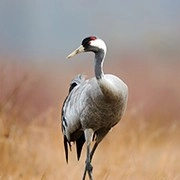Did This Save a Species?

Lykkers, an inspiring journey has just taken place in the world of wildlife conservation. Seventy southern white rhinos, among the largest land animals on Earth and listed as a vulnerable species, have been safely relocated to a new protected habitat in Rwanda.
This ambitious and carefully coordinated effort marks the largest transfer of its kind, offering hope for a species that has faced a steep population decline.
The Journey to a Safe Haven
A Monumental Move Across Continents
The relocation of these 70 rhinos from South Africa to Rwanda was led by African Parks, an organization committed to protecting endangered species across the African continent.
The mission, named Rhino Rewild Initiative, was supported by the Howard G. Buffett Foundation and unfolded in two phases over a span of six days.
A 3,400-Kilometer Expedition
After initial transport to Munywana Conservancy in South Africa—a region chosen for its similar climate and exposure to natural diseases—the rhinos were loaded individually into secure steel crates and driven to King Shaka International Airport. From there, they were flown to Rwanda and transferred overland to their final destination: Akagera National Park.
Why Akagera?
Akagera was selected for its strong record of ecological management. Over the past decade, it has become a model of effective park operations and wildlife protection. The goal is not just survival, but for these rhinos to thrive and help establish a new, stable population in East Africa.
Purpose and Long-Term Vision
Creating Sustainable Populations
This effort is part of a broader plan to reintroduce more than 2,000 white rhinos to protected areas across the continent. With carefully monitored environments and committed staff, these initiatives aim to diversify the gene pool and reduce the risk of losing the species altogether.
Building on Past Success
This isn’t the park’s first encounter with rhinos. In 2021, thirty individuals were introduced, and their number has since grown to 41. These early results demonstrate that Akagera offers the kind of habitat and management necessary for long-term success.
Prepared for New Challenges
While this operation has been a major success so far, those managing the park remain focused. The coming months will involve close monitoring of the animals to ensure they adapt well. Conservation experts will be observing their health, behavior, and integration into the ecosystem.
The Human Connection
Empowering Local Communities
This conservation milestone is also creating new opportunities for the people living around Akagera. Managed wildlife areas often contribute to local economies by encouraging responsible tourism and generating employment.
Partnership and Cooperation
The project exemplifies what is possible when communities, landowners, conservationists, and supporters work together. Collaborative conservation ensures both people and wildlife benefit, building a stronger future for all involved.
A New Beginning for the Rhinos
From Danger to Opportunity
Southern white rhinos have long been under pressure due to habitat loss and threats from illegal hunting. Offering them a safe, well-guarded home significantly improves their chances of survival and growth.
The Role of Protected Areas
Well-managed protected environments are essential in reversing species decline. These spaces provide the safety, resources, and oversight needed for endangered species to recover and flourish.
Next Steps in Conservation
This relocation is not the end but rather a foundation for further action. The Rhino Rewild Initiative is continuing its mission, bringing more animals into safe environments and fostering self-sustaining populations across the continent.

In Conclusion
Lykkers, what’s happening in Rwanda is a beacon of hope for wildlife everywhere. The successful relocation of seventy white rhinos is more than a headline—it’s proof that coordinated, science-based action can create real, lasting impact. With careful management and continued support, these animals now have a chance to live freely and securely, and their journey might just inspire the next great chapter in conservation.

 · Animal Team
· Animal Team